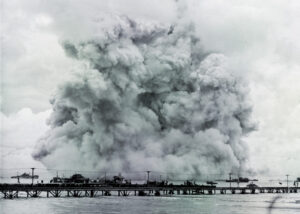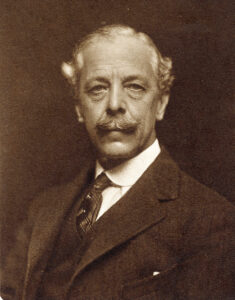War Along the Bayous: The 1864 River Campaign in Louisiana, by William Riley Brooksher, Batsford-Brassey’s, Dulles, Va., $24.96.
Union Maj. Gen. Nathaniel P. Banks’ Red River campaign was undertaken to cut off Texas from the rest of the Confederacy, to show France that the Union still maintained a strong presence along Mexico’s border, and to capture as much cotton as possible for the North’s textile industries. The campaign failed on all fronts.
Banks’ ultimate objective was capturing the vital port city of Shreveport, La., the gateway to Texas. Supported by Admiral David Porter’s ironclad fleet, the campaign was supposed to be a cakewalk. Confederates Lt. Gen. Edmund Kirby Smith, commander of the Trans-Mississippi Department, and his commander in west Louisiana, Maj. Gen. Richard Taylor, son of President Zachary Taylor and an aggressive commander in his own right, opposed Banks.
Throughout the campaign, the Union army and navy failed to support each other in their advance up the Red River. In fact, the branches used each other as scapegoats for their combined failure. The army could not advance without the boats to secure the river, while the navy could not move forward without the army clearing out pockets of Rebel resistance along the banks. The navy was preoccupied with nabbing every bale of cotton they found instead of supporting their land-bound brethren.
The Union army in Louisiana consisted of well-fed, experienced troops with excellent field officers but poor overall leaders. Earlier in the war, Banks had been constantly routed by “Stonewall” Jackson in Virginia’s Shenandoah Valley.
William Riley Brooksher brings the Red River campaign to life in War Along the Bayous. With excellent maps and solid prose, he enlivens these lesser-known battles of the Civil War and does a fine job of combining both the land and river campaigns. Drawing on soldiers’ letters and the Official Records, he paints a vivid, evenhanded picture of a campaign that commenced with great expectations but ended in humbling retreat.
The campaign’s three battles–Mansfield, Pleasant Hill and Yellow Bayou–are well examined. At Mansfield the Union army ran into a Southern redoubt commanded by Taylor. His stubborn defense drove the Federals back, but his failed attempt to capitalize on the victory led to the Battle of Pleasant Hill, a counterattack that the Federals defeated with heavy Confederate losses.
Banks guaranteed defeat for his own army by sending his supply wagons to the rear before the Confederates attacked, depriving his men of the ammunition and food they needed to change their successful defense into an effective offense.
Although the grayclads checked and rolled back the invaders, personal conflicts between Smith and Taylor nearly ruined the Confederate resurgence as disagreements over strategy delayed and weakened attacks. Taylor became more concerned with winning arguments than battles, threatening to resign when he perceived fellow officers were acting too timidly. Fortunately for the South, the fight at Mansfield dashed whatever gumption Banks still possessed.
Defeated and demoralized, the Union army retreated to Alexandria, La., while the Confederates hotly pursued. Surrounding Banks’ army on all sides, they moved in for the kill but were surprised by a spirited Union counterattack that routed the would-be victors at Yellow Bayou and opened a gap large enough for the rest of the army to escape through. With that, the land campaign was over.
The Union navy also had a difficult time. The riverboats came under attack at every bend of the river. In some cases, Confederate sharpshooters ran across the inner bends of the river to fire on the ships a second time. The fighting was lopsided–the boats were sitting ducks, blindly firing at a concealed enemy. Admiral Porter’s own ship was torn up so badly that Porter himself had to race into the engine room and force the ship out of harm’s way.
Brooksher is at his best describing the action of battle or the race to get the Union navy out of the receding Red River. His mix of personal stories and tactical overviews gives the book balance. The author would have done himself an extra service, however, had he researched at any of Louisiana’s public libraries located along Banks’ old path. Almost every town library contains locally published history books filled with personal stories from civilians who caught the worst from the passing Union army. The added dimension of civilian suffering would have enhanced Brooksher’s work.
The book leaves the reader asking one question about the Confederates: If Smith and Taylor, aggressive and successful generals, had gotten along better, what more might they have accomplished?
War Along the Bayous does an excellent job of exploring one of the lesser-known theaters of the Civil War. While the campaign proved tactically and strategically useless to the Union, it gave the South another source of pride and effectively ejected Banks from western Louisiana.
Kevin M. Hymel




